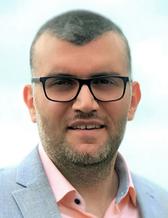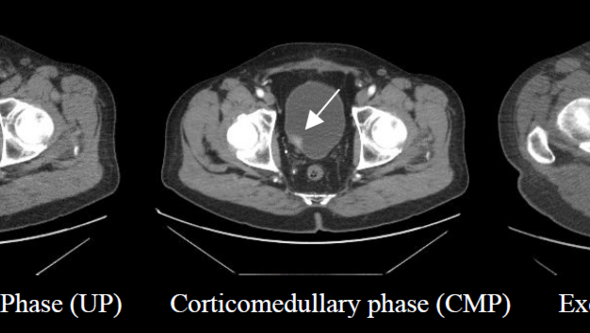- Home
- Research
- Find research
- Suleiman Abuhasanein: New and rapid ways to detect bladder cancer
Suleiman Abuhasanein: New and rapid ways to detect bladder cancer
Investigation of patients suspected of having urinary bladder cancer (UBC) is resource-intensive. Often, it requires a camera examination through the urethra, which can cause discomfort and complications. Suleiman Abuhasanein’s thesis reveals new and rapid methods for early detection of UBC, potentially reducing costs for society and suffering for patients.

SULEIMAN ABUHASANEIN
Dissertation defense: 31 May 2024 (click for details)
Doctoral thesis: Optimizing the early diagnosis process of urinary bladder cancer
Research area: Urology
Sahlgrenska Academy, The Institute of Clinical Sciences
A new urine test and an innovative AI technique can simplify the investigation of bladder cancer (UBC). That’s what Suleiman Abuhasanein’s research shows.
UBC is a common form of cancer. Visible blood in the urine (macroscopic hematuria) is often the first symptom. A delay in diagnosis is linked to a worse prognosis. Therefore, it’s crucial to detect the disease as early as possible.
However, current investigation methods such as cystoscopy (a camera examination inserted through the urethra) and computed tomography urography (CTU) are expensive and resource-intensive.
“They also have known complications, and only about 10–15 percent of the patients examined actually have underlying urinary tract cancer. Simple diagnostic methods for patients presenting with macroscopic hematuria like urine tests to rule out UBC are lacking,” says Suleiman Abuhasanein, a urology specialist at Uddevalla Hospital and currently pursuing a doctorate at the Institute of Clinical Sciences.

New ways to investigate UBC
What is the focus of your research?
“The main aim of my thesis is to examine how the investigation of macroscopic hematuria has evolved over time. And to study the effects of this development and find possible improvements in the investigation process. We have therefore studied how early detection of UBC can affect tumor characteristics,” says Suleiman Abuhasanein, and continues:
“We have also evaluated the potential of CTU as a standalone investigation method and AI interpretation of CTU to improve the investigation of patients with suspected UBC. Finally, we have evaluated a new simple urine test with an mRNA panel to detect or exclude UBC with high diagnostic certainty.”

“A rapid process”
What are the key research findings?
“Prompt investigation after observing blood in the urine can reduce the risk of developing more dangerous tumors. CTU imaging can reliably examine patients with blood in the urine. We have developed an innovative AI technique that enables automatic identification of bladder cancer on CTU imaging. With a new urine test, we can now detect or exclude bladder cancer in patients experiencing macroscopic hematuria. Finally, we have developed a new diagnostic framework for examining macroscopic hematuria.”
What could the research findings mean for this patient group?
“These findings eliminate the need for camera examinations in the bladder, an examination that can cause both discomfort and complications. Faster diagnoses become possible, reducing the burden on urological clinics. A rapid process also reduces society’s costs for patients undergoing investigations.”

“Scientific euphoria”
What has been enjoyable and rewarding about the doctoral project?
“It is enriching to contribute to new knowledge in the field. Knowing that one’s work can have a real impact and contribute to progress in the field gives a feeling of pride and achievement. In addition, the opportunity to participate in conferences and meetings within the research community has been inspiring and provided new perspectives,” says Suleiman Abuhasanein, adding:
“What I find most fascinating about research, what I call scientific euphoria, is when you have a hypothesis, collect data over a long period, sit down and start analyzing… and suddenly completely new results with new insights and sometimes surprising findings emerge.”
And what have been the biggest challenges?
“Handling the large amount of information and needing to stay updated with the latest research in the field has been demanding. In addition, balancing research, clinical work, and other things in life has been challenging. Despite these challenges, the project has given me the opportunity to grow both as a researcher and as a person, and I look forward to continuing my research journey.”
Text: Jakob Lundberg